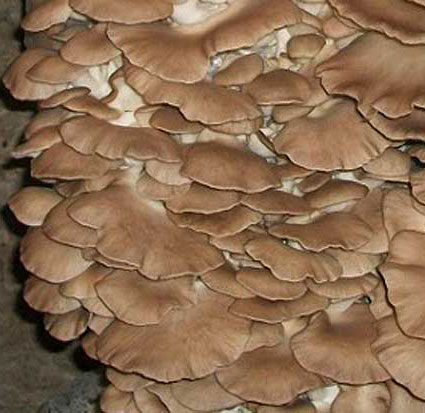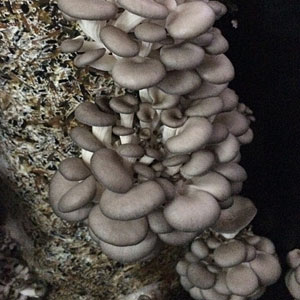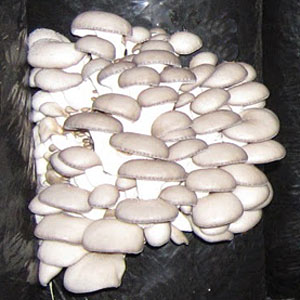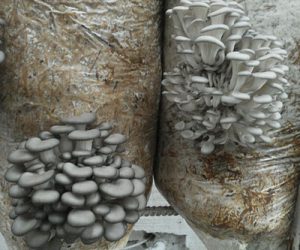I thought for a long time whether to write an article about oyster mushroom strains.
After all, only large industrial enterprises use the grain spawn of world-famous firms, and it is unlikely that their technologist will read my article. (there should be a smiley here)
Smaller laboratories most likely have their own classification of strains, known only in the country where this manufacturer is located.
But then I decided that I would write about the main features that need to be considered (and it doesn’t matter what name the strain you use has).
If you want to know what strains are grown in those countries where most of the population still understands Russian, check out this article of mine.
There are many photos and descriptions of different strains that are used in winter or summer.
Google now does translations quite correctly.
Here I will tell you general information and some features of working with a different set of strains in one room.
A mushroom strain is a culture that has a certain set of characteristics.
All these qualities are determined by a set of genes.
It is this set that provides a variety of appearance of oyster mushrooms and various microclimate conditions for growing.
The concept of strain is also used for microorganisms. It is analogous to the concept of "variety" for plants and "breed" for animals.
The optimum temperature for different strains of oyster mushrooms ranges from 8 to 26 degrees Celsius. According to this feature, the strains are divided into three groups: universal, winter, summer.
If you are just starting out growing oyster mushrooms, try 5-6 different strains to see which mycelium is suitable for growing oyster mushrooms in your particular space. Only one strain should be grown in one chamber at a time.
Below I will answer the question "Why?"
Keep in mind that most of the discussion on the forums that the grain spawn (mycelium) is not as good as it used to be is due to deficiencies in ventilation, humidification and heating systems.
Microclimate issues need to be taken very seriously. Learn more about ventilation.
But mushroom growers do not like to admit their mistakes. They like to blame the grain spawn for everything. Of course, spawn also comes in different qualities. But 99% of the time it's not his fault.
The colors of oyster mushrooms depends not only on the strain, but also on the type of oyster mushroom.
There are types of oyster mushrooms called lemon, pink and blue (Columbinus) oyster mushrooms. The color of these mushrooms can be judged by their name.
What determines the color of oyster mushrooms
First of all, from the group features of strains.
Pulmonary oyster mushroom (Pulmonaris) has a brown color.
The line of the “K” group is dark gray, with an admixture of brown or light coffee tint.
The line of the "P" group is gray and light gray.
The color of the fruiting bodies, described in the characteristics, is manifested under optimal climatic conditions of cultivation.
 Pulmonaris
Pulmonaris line of group "P". Do you see the coffee tint here? (Because it's there)
line of group "P". Do you see the coffee tint here? (Because it's there)
 Gray color is typical for the "K" line
Gray color is typical for the "K" lineFruits of a more saturated, dark shade are formed if they are grown:
• in natural light, such as in greenhouses or rooms with windows,
• at a temperature below the optimum. Light gray strains may become light blue or even blue in color.
At high temperatures, the oyster mushroom brightens.
 Growing in one chamber two strains that do not coincide in terms of incubation/fruiting, with different optimum temperatures and humidity, lead to a change in the appearance of the mushrooms of one of the strains.
Growing in one chamber two strains that do not coincide in terms of incubation/fruiting, with different optimum temperatures and humidity, lead to a change in the appearance of the mushrooms of one of the strains.
The photo shows two strains in one growing chamber.
The K-17 strain (in the photo - the block on the left) develops quite well at a carbon dioxide concentration of 900 ppm. He has a dense, plump hat, strong small stems.
And for strain K-15, such a concentration is fatal: oyster mushroom pulls a stem, caps are light, thin, fragile. It is designed for summer cultivation.
In summer, only fresh air enters the ventilation, and it normally grows at CO2 levels up to 600, maximum 700 ppm.
That is, if you want to grow several strains in the same room, select varieties with the same requirements for climatic conditions.
Some strains are more susceptible to bacteriosis than others.
Some strains can withstand large changes in temperature (or humidity), while others are very sensitive to microclimate changes.
There are strains that, when moisture gets on the primordia, will continue to grow, and there are those in which the primordia die from the condensate film.
You need to find the varieties that will be most suitable for the ventilation and humidification system that you have.
